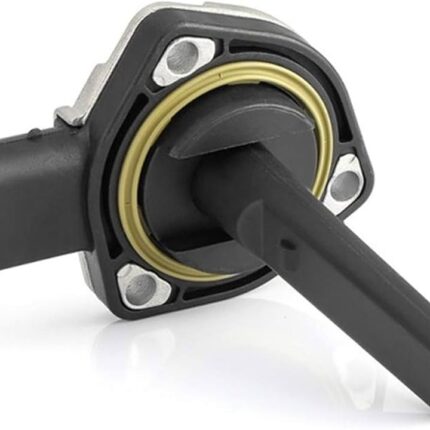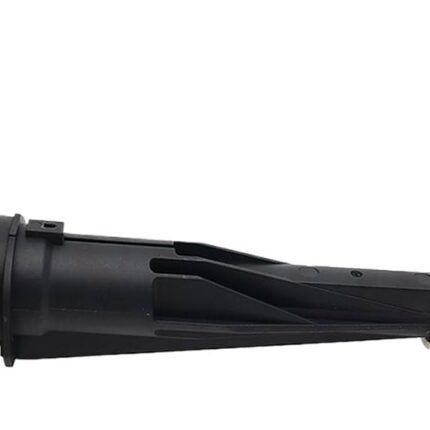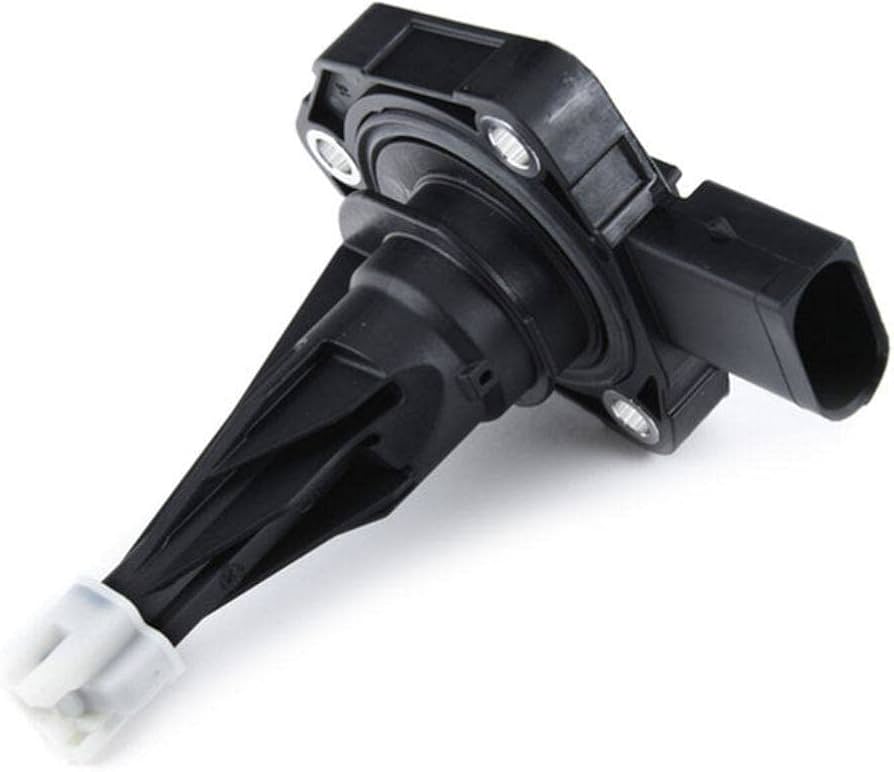-6%
Get BMW F10 528i xDrive N20 2.0L Engine Oil Level Sensor 12617638341 in Kenya
The oil level sensor is a vital component in modern vehicles, ensuring the engine has the correct amount of oil to operate efficiently. Proper lubrication is essential for the engine’s performance, and the oil level sensor plays a crucial role in monitoring and maintaining this. This guide explores the oil level sensor’s functions, types, importance, signs of failure, maintenance tips, and replacement process.
What is an Oil Level Sensor?
The oil level sensor is an electronic device that monitors the engine oil level and sends this information to the vehicle’s onboard computer. If the oil level drops below a safe threshold, the sensor triggers a warning on the dashboard to alert the driver. This helps prevent engine damage caused by low lubrication.
The sensor is usually located in the oil pan or sump, where it has direct contact with the engine oil.
Functions of an Oil Level Sensor
- Monitoring Oil Levels:
- The primary function is to continuously measure the amount of oil in the engine and provide real-time feedback.
- Alerting the Driver:
- When the oil level falls below the minimum mark, the sensor activates a warning light or message on the dashboard.
- Preventing Engine Damage:
- By detecting low oil levels early, the sensor helps avoid engine overheating, increased friction, and potential damage.
- Supporting Advanced Engine Management Systems:
- In modern vehicles, the oil level sensor integrates with the ECU (Engine Control Unit) to optimize engine performance.
Types of Oil Level Sensors
There are two main types of oil level sensors:
- Mechanical Oil Level Sensors:
- Operate using a float mechanism that rises and falls with the oil level.
- These are simpler and less expensive but prone to wear and less precise.
- Electronic Oil Level Sensors:
- Use advanced technology like capacitive, ultrasonic, or resistive measurement to provide accurate readings.
- Common in modern vehicles due to their precision and reliability.
Components of an Oil Level Sensor
An oil level sensor typically consists of:
- Sensing Element:
- Measures the oil level using capacitance, resistance, or ultrasonic waves.
- Housing:
- Protects the internal components from heat, oil, and contaminants.
- Connector:
- Links the sensor to the vehicle’s electrical system.
- Signal Processor:
- Converts the raw data into readable information for the ECU or dashboard display.
Importance of the Oil Level Sensor
- Engine Longevity:
- Maintaining optimal oil levels reduces wear and tear on engine components, extending their lifespan.
- Prevention of Catastrophic Failures:
- Early detection of low oil levels prevents severe engine damage that could lead to costly repairs.
- Improved Safety:
- Alerts the driver to potential issues before they become critical, ensuring safer driving conditions.
- Optimized Performance:
- Proper oil levels enhance fuel efficiency and overall engine performance.
- Compliance with Modern Standards:
- Many modern vehicles rely on sensors for enhanced diagnostics and compliance with emissions standards.
Signs of a Failing Oil Level Sensor
A faulty oil level sensor can compromise engine safety. Look out for these signs:
- Dashboard Warning Light:
- The oil level warning light remains illuminated despite adequate oil levels.
- Inaccurate Oil Level Readings:
- The sensor shows fluctuating or false readings, causing confusion.
- Delayed Warnings:
- The sensor fails to alert the driver when the oil level is low.
- Engine Overheating:
- Low oil levels from an unnoticed leak may cause the engine to overheat.
- Inconsistent Engine Performance:
- Erratic oil level readings may lead to uneven engine operation.
Common Causes of Oil Level Sensor Failure
- Contamination:
- Dirt, sludge, or oil debris can interfere with the sensor’s functionality.
- Electrical Issues:
- Faulty wiring or corroded connectors can disrupt the sensor’s signal.
- Mechanical Damage:
- Physical impact or wear from prolonged use may damage the sensor.
- Age and Wear:
- Like any component, sensors degrade over time and may fail with extended use.
- Extreme Operating Conditions:
- High temperatures and vibrations in the engine bay can reduce the sensor’s lifespan.
Maintenance Tips for Oil Level Sensors
- Regular Oil Changes:
- Clean oil reduces the buildup of sludge and debris that can harm the sensor.
- Inspect Wiring and Connectors:
- Periodically check for loose or damaged wires and ensure the connectors are secure.
- Keep the Engine Clean:
- A clean engine bay minimizes the risk of dirt and grime affecting the sensor.
- Avoid Overfilling Oil:
- Excess oil can cause sensor malfunctions and lead to inaccurate readings.
- Check for Oil Leaks:
- Address any leaks promptly to prevent low oil levels and contamination.
Steps to Replace an Oil Level Sensor
Replacing an oil level sensor requires basic mechanical knowledge and tools. Here’s how it’s typically done:
- Prepare the Vehicle:
- Park on a level surface, turn off the engine, and allow it to cool.
- Locate the Sensor:
- Consult the owner’s manual to find the sensor, usually in the oil pan.
- Drain the Oil:
- Place a drain pan under the vehicle and remove the drain plug to empty the oil.
- Disconnect the Sensor:
- Unplug the electrical connector and remove the mounting bolts securing the sensor.
- Remove the Sensor:
- Gently pull out the old sensor and inspect the area for debris or damage.
- Install the New Sensor:
- Insert the replacement sensor, secure it with bolts, and reconnect the electrical plug.
- Refill the Oil:
- Reinstall the drain plug and add fresh oil to the engine.
- Test the System:
- Start the engine and check for proper sensor operation and absence of warning lights.
Advanced Oil Level Sensors
Some modern vehicles feature advanced oil level sensors with additional capabilities:
- Temperature Monitoring:
- Measures oil temperature alongside the level for enhanced diagnostics.
- Integration with Telematics:
- Communicates with connected vehicle systems to provide remote oil monitoring.
- Self-Diagnosing Sensors:
- Identify faults and notify the ECU for quicker troubleshooting.
Conclusion
The oil level sensor is a small but indispensable part of a vehicle’s engine system. It ensures proper lubrication, protects the engine from damage, and enhances overall performance. By understanding its function, recognizing signs of failure, and maintaining it regularly, you can prolong its lifespan and ensure the smooth operation of your vehicle. Regular checks and timely replacements are essential for maintaining your vehicle’s health and performance.
Follow us on Facebook for more parts.




Reviews
Clear filtersThere are no reviews yet.